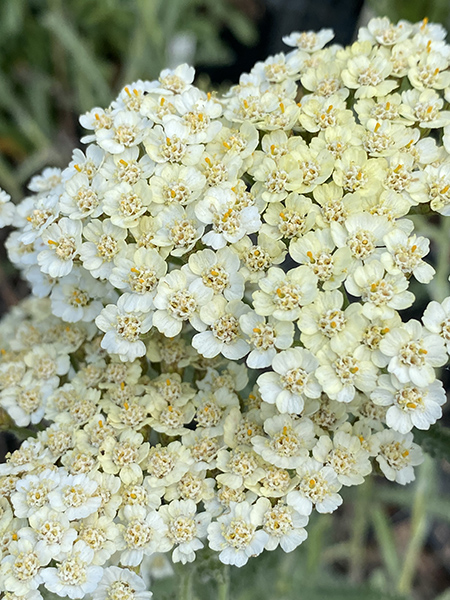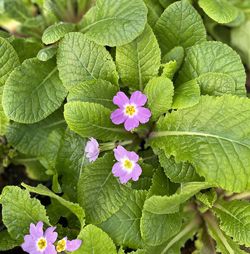
Achillea
Yarrow
Legend has it that Achilles used this plant to heal his soldiers’ wounds after battle. As a folk remedy, its leaves are prescribed to soothe abrasions and toothache. We find this sturdy, dependable plant the perfect remedy for many design situations. The broad, flat flower heads project horizontal elements, their colors blending with other perennials. Spicy smelling, fern-like foliage and strong straight stems add to overall attractiveness. Spreading and drought tolerant, Yarrow seems to thrive on neglect, can handle ocean spray and will bloom again in the fall if cut back in midsummer.
Each 10.50

Named for the ivory-white color that the pale yellow flowers turn with age, ‘Alabaster’ blooms late and, with dried seed heads, keeps our interest well into winter. Its form is stiff and upright and its foliage gray-green, making an excellent neighbor for Aster ‘Little Carlow’ or grasses such as Miscanthus sinensis ‘Nippon’.
Blooms August–October.
Size: 2-1/2' high x 2' 0" wide.
Hardy to zone 4.
Please fill out our Registration Form to receive news of updates to the web site, availability of new plants, give us your feedback, and to be on the mailing list to receive future printed catalogs.
Other selections in this genus:
- Achillea x ‘Coronation Gold’
- Achillea filipendulina ‘Parkers Variety’
- Achillea ‘Fireland’
- Achillea ‘Hella Glashoff’
- Achillea ‘Hoffnung’
- Achillea ‘Inca Gold’
- Achillea x kellereri
- Achillea ‘Marmalade’
- Achillea millefolium ‘Pretty Belinda’
- Achillea millefolium ‘Red Velvet’
- Achillea ‘Mondpagode’
- Achillea ‘Paprika’
- Achillea ‘Sawa Sawa’
- Achillea x schwellenberg
- Achillea ‘Taygetea (cream form)’
- Achillea tomentosa ‘Aurea’
- Achillea ‘Walther Funcke’
- Achillea ‘Weser River Sandstone’
 A printed copy of them will be available upon request.
A printed copy of them will be available upon request.









